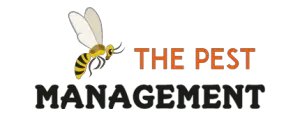Are you wondering if springtails can control mold outbreaks? Do Springtails Eat Mold?
What do you need to allow springtails to eat mold? Are there other ways of controlling mold in terrariums?
In this article, we’ll discover how well springtails eat mold and what else you can do about it.
Do Springtails Eat Mold?
Yes. Springtails love to feast on mold. This is one of the greatest benefits to having springtails in your terrarium.
If you are feeding the culture in your terrarium, springtails will not aim to eat what you are offering. They will wait for mold to grow on the culture in order for them to have a better meal.
Springtails are known to feast off of decayed plant matter that is growing mold on it.

Will Springtails Get Rid of Mold?
Yes. Springtails do a fantastic job of getting rid of mold inside terrariums or vivariums. They’re able to reproduce much faster than isopods and focus solely on mold.
Isopods have wider range of appetites, but springtails will focus their attention to mold only. If you do not have enough mold in your terrarium, springtail populations will die off. Since springtails breed quickly, they are going to do an excellent job at controlling mold.
Adding springtail culture to a terrarium is a cheaper and effective way to deal with mold rather than other invasive strategies such as removing the substrate or dabbing at with hydrogen peroxide.
Do Springtails Eat Fungus?
Springtails not only eat fungus, but they also consume the following:
- Bacteria
- Fungi
- Lichens
- Algae
- Decaying vegetation
- Mold
While springtails are busy consuming all of the mentioned sources of food above, they are also fertilizing the soil while doing so. Carrion is another is another source of food for springtails and small invertebrates.
The best thing to do is maintain a humid and moist terrarium while feeding the culture. This allow for mold to grow. Springtails love to focus their attention on mold above all else.
What Eats Mold in Terrariums?
Springtails love to eat mold in a terrarium. While isopods and gnats also shift their attention to mold, they have wider ranges of appetites and will look elsewhere for other sources of food if they are available.
The following organisms are known to enjoy eating mold:
- Psocids
- Isopods
- Springtails
- Mold mites
- Gnats
Springtails will be happy to focus entirely on mold itself. This is why they are beneficial terrarium insects. Introduce a colony of springtails into your terrarium in order to keep the ecosystem happy and healthy.

Do I Need to Feed my Springtails?
You can feed your springtails as often as three times a week if you wish. Open the lid and supply some oxygen to your springtails.
A culture of springtails will continue to grow in a healthy terrarium that produces enough mold. This is why it’s essential to feed the culture in your terrarium.
Offer decaying fruits or vegetables. Know that springtails are not going to eat what you are introducing into the terrarium. They are going to wait for the food sources to grow mold on them.
Then, springtails will have plenty of mold to eat to grow their population. Once their food source of mold runs out, they may not have enough available options to continue growing their population. At this point many springtails may die off.

What to Do if There Is Mold in the Terrarium?
Getting rid of mold in your terrarium may involve you to actively consider manipulating or restarting the entire ecosystem again. Thankfully, you can employ springtails to rescue the situation.
Springtails love to eat mold inside a terrarium and keep things under control. They are harder working and populate terrariums faster than isopods.
You have multiple other methods at your disposal to control mold in a terrarium:
- Remove all plants and accessories.
- Wash the entire container with soap and hot water.
- Wash stones or decoration separately.
- Restart the terrarium with a fresh new substrate and culture.
- Spray your active terrarium with chamomile tea that contains miles organic fungicides because it is rich in sulfur.
- Open up your terrarium to allow air to come in. The airflow will reduce humidity and mold thrives and moisture which will dissipate and kill it off.
- If mold is localized in certain areas, remove those parts, objects, decorations are stones and quarantine them. During this time you can wash them as well.
- Use hydrogen peroxide to kill mold on materials that contain pores. 3% hydrogen peroxide solution With a Q-tip works well in this process.
Conclusion
Mold is a natural part of healthy and thriving terrariums. We must remember to not try and keep them too clean or we will thwart the ability of this ecosystem from managing itself.
Introduce isopods and springtails to do the work for you by eating mold so you don’t have to do any of the aforementioned steps involving re-potting the entire substrate, washing out the entire thing with hot water and soap or applying hydrogen peroxide.
Try this out first before you make extra efforts to control mold on your own.
Thanks for visiting ThePestManagement.com for the best information to help you to make the pest control process easy, safe & affordable.
We have a variety of articles to enjoy the management of little critters and healthy ecosystems as well. Sometimes it’s best to not kill off the insect world when we can observe and enjoy them in enclosed, safe and healthy environments.
